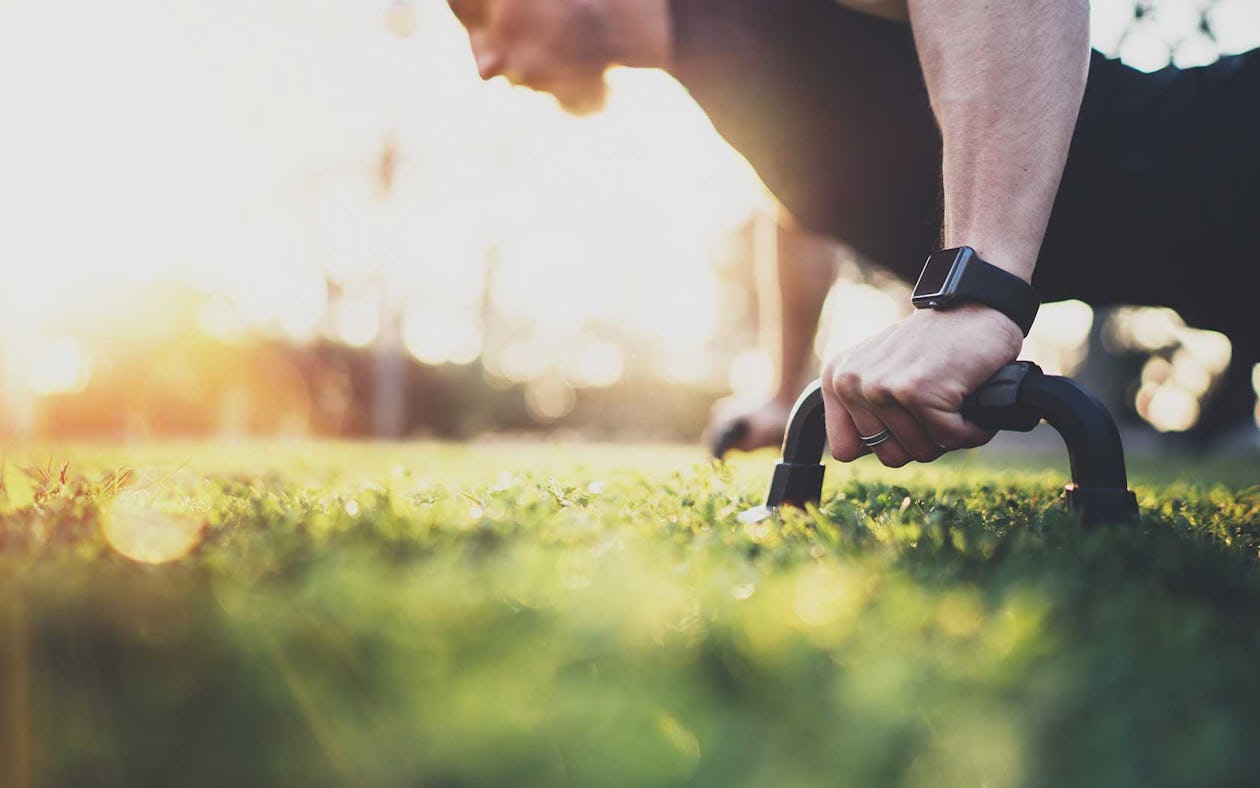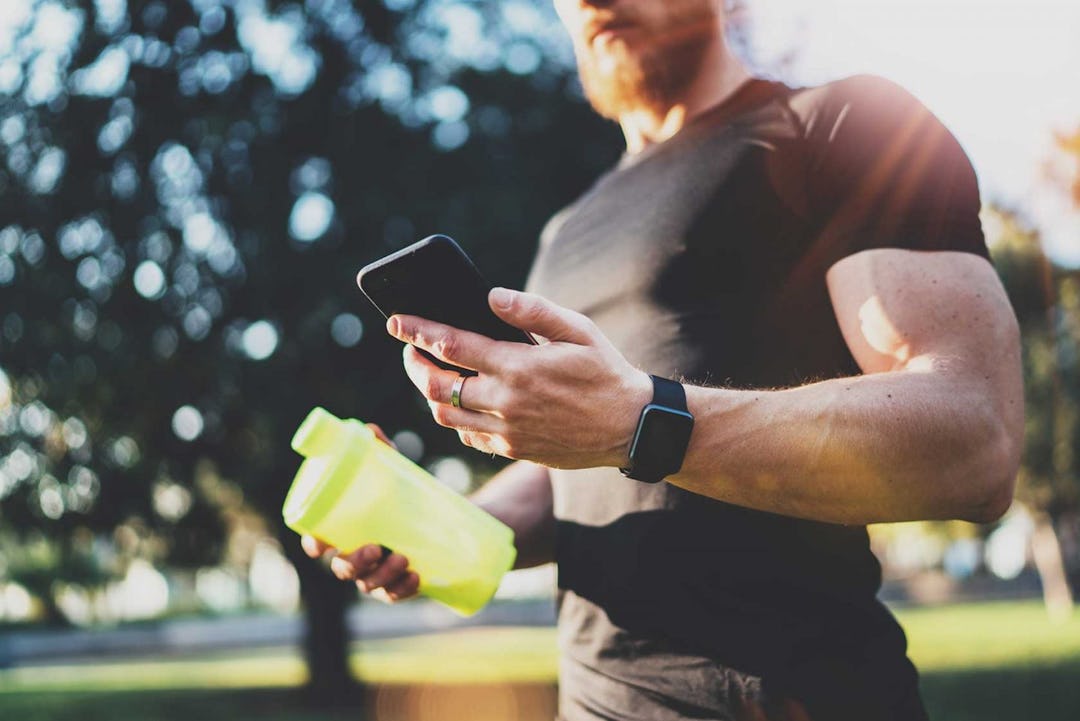A report by Forrester, a leading market research company, estimates that 20% of Americans now own wearable devices, and many of these are used for fitness tracking. By 2020, the global market for fitness-focused apps and other devices is expected to grow to $30 billion. Manufacturers and developers promise monitoring of everything from sleep to heart rate variability, and even personalized coaching that can improve your exercise technique. But before you get swept away by the hype and start thinking that your choice of fitness technology is a magic bullet that can improve every aspect of your performance, recovery, and life, let’s take a look at three of the biggest problems it poses. Then we’ll move on to some suggestions that help you use these devices more effectively.
1. The Data Is Inaccurate
It might be fine to let technology guide us if the information it was providing was entirely correct. But the dirty little secret that the fitness tracking industry wants to keep a lid on is that it’s often anything but. A study conducted by the Stanford School of Medicine put seven leading devices through their paces and found that “the most accurate was off by an average of 27%,” and “the least accurate was off by 93%.”
Wait, what?! So even if you’re using the “best” fitness tracker out there, it’s only 73% accurate? And if you’re stuck with the worst option, it’s only giving you seven percent of the picture? If an archer was off by such a wide margin, he wouldn’t just fail to hit the bullseye, he’d miss the target altogether. And when it comes to your health and fitness, you can’t end up this far off the mark if you want any hope of meeting your goals.
2. Your Device Doesn’t Do Context
When I get asked a question like, “How soon should I eat after working out?,” or, “How much protein should I take in?” I answer, “It depends.” I don’t feel comfortable giving a stock, one-size-fits-all answer because I don’t know off-hand the athlete’s goals, body composition, where he or she is at in his or her training/competition cycle, and so on. Without that information, I don’t have the required context to answer the question well. The trouble with fitness trackers is that they don’t take such factors into consideration—they just collect numerical information, run it through an algorithm, and spit out recommendations based on a line of best fit.
In his book Game Changer, Fergus Connolly talks about the importance of four elements of performance that are present in every moment of a game or training session: technical, tactical, psychological, and physical. Your wearable only gives you information on physical factors and does not take into account the other three—all of which play a significant role in determining outcomes. Fitness trackers fail to acknowledge factors like stress from your job or relationships, weather, injury history, etc. As a result, they provide a very limited snapshot of where your fitness and well-being are at in a given moment.
3. The “More is More” Delusion
If you’ve ever used a device to count your steps, I bet you were pretty pleased with yourself the first time you hit that recommended 10,000 minimum. But rather than attempting to keep you at a sustainable level—be it with steps, sets, reps, miles, elevation gain, and more—your tracker urges you to do more tomorrow and even more the next day. As Adam Alter describes in his book Irresistible, this is the so-called “gamification” element that hardware and software developers build in to try and get us hooked. By making you frame your workouts as a competition with yourself, you’re supposed to enjoy them more. Everyone wants progress, of course, but more isn’t always more, and in some cases, it can end up being less.
What I mean is that it’s impossible to just keeping going further, faster, and heavier day after day without eventually hitting a plateau or, in the case of overtraining or injury, a brick wall. You need to be all in for the long game, which means creating a program that is sustainable not just today or tomorrow but in six months or a year from now. We can put ourselves under so much pressure to compete with and exceed our scores—or those of others, if you’re chasing a “King of the Mountain” badge—that we run, lift, or cycle ourselves into the ground.
Simple Solutions

Short of collecting all our devices and burning them, what’s the best way to avoid the pitfalls of flawed technology? In my book, Unplugged, I suggest that you use fitness technology to connect the dots between what you’re feeling and what’s going on with your physiology without outsourcing your consciousness to a device.
A. Trust Yourself First
If you’re using a tracker for your sleep and getting a score for it each morning, there’s nothing wrong with that. But see if how you feel when you get out of bed matches up with this number.
Say your alarm goes off and you look at your wearable. It says your sleep score is 89 and you feel fantastic. Great! We’ve got a match. But, if you feel well rested but only score a 49, then you might want to re-think whether that device is doing what it’s supposed to. Don’t trust it outright; trust your instincts.
B. Run Experiments
Another useful way to use technology is to allow you to test a specific hypothesis (hey, that’s the scientist in me!). You can experiment with different training and wellness approaches and let technology help point you to which works best. For example, say that you want to try out a couple of different warm-up routines before you do an interval workout on the rowing machine to see which is most effective. Maybe the first one involves you jumping rope for a couple of minutes and then doing two rounds of 10 body-weight lunges, ring rows, pushups, and air squats. In the second option, you simply row 2,000 meters slowly. Do two workouts, warming up the two different ways you’ve selected. After your warm ups, you could use the performance monitor on your rowing machine to record your 500-meter splits and overall times for each interval in each workout, along with your power output, stroke rate, and so on. By comparing the quantitative results of each workout (one done with the body-weight warmup and one done with the rowing warmup), you could get a sense of which prep routine works best for your desired outcome.
C. Use Man and Machine
You could also use technology to help you better identify and self-correct movement errors that might lead to reduced performance or even injury. This is often most effective when the technology is used by a coach (a real human one, not the “personalized coach” on your wrist). Say that your coach or training partner sees that your knees start to cave in during your squat. He or she could use an app like Coach’s Eye (coachseye.com) to record video of you performing your next rep and then you can review it together afterward. The app would show you the point at which your knees start to cave, and then the coach can ask you to try and feel when it happens in your next couple of reps.
Once you can identify the sensation that accompanies this valgus knee error, the coach or training buddy can then give you a cue on what to do about it, like “Shove your knees out,” or, “Make sure you keep your feet screwed into the ground as you squat down.” The next step is for you to apply this fix yourself once you feel your knees start to cave inward. In this example, you’ve used technology to identify an issue as it’s happening, but your partner or coach is irreplaceable in helping you solve it.
Remember that, ultimately, fitness technology is neither friend nor foe. The key is to use it intentionally, deliberately, and in context as a helpful tool rather than let it become a dominating taskmaster. If you can do that, you’ll not only achieve short-term gains, but also long-term sustainability, greater self-awareness, and deeper insight into your fitness, wellness, and performance.

)





